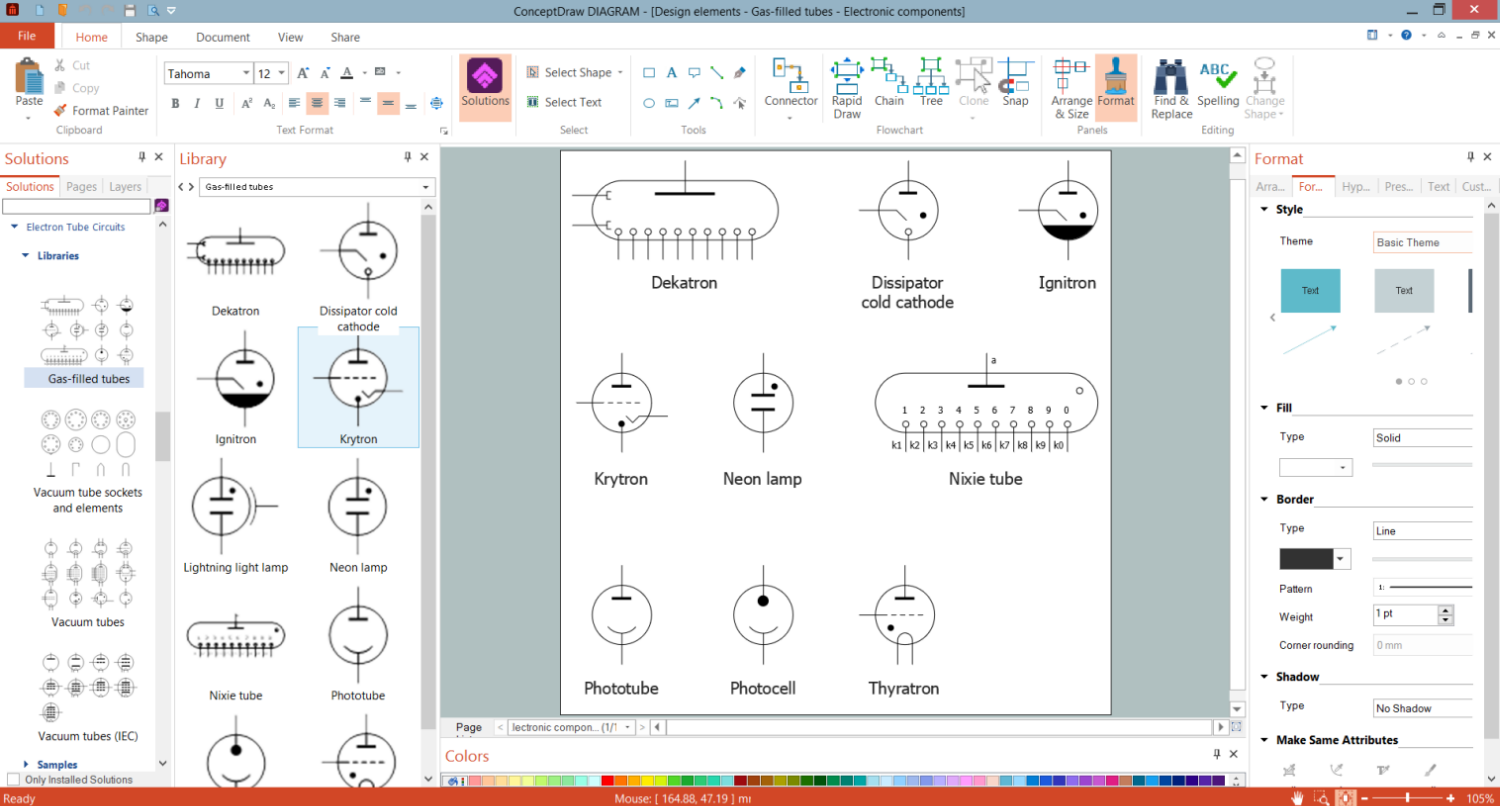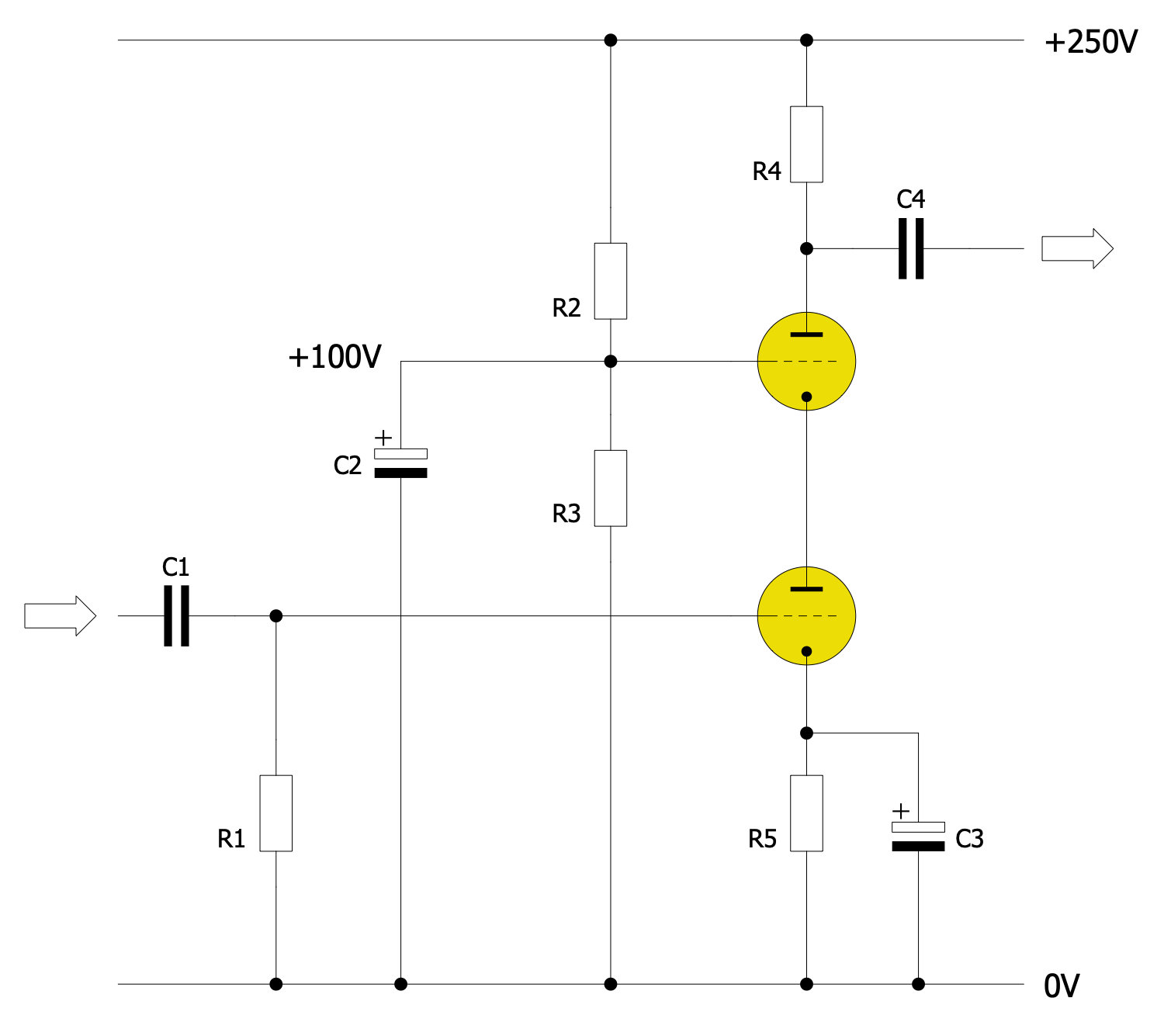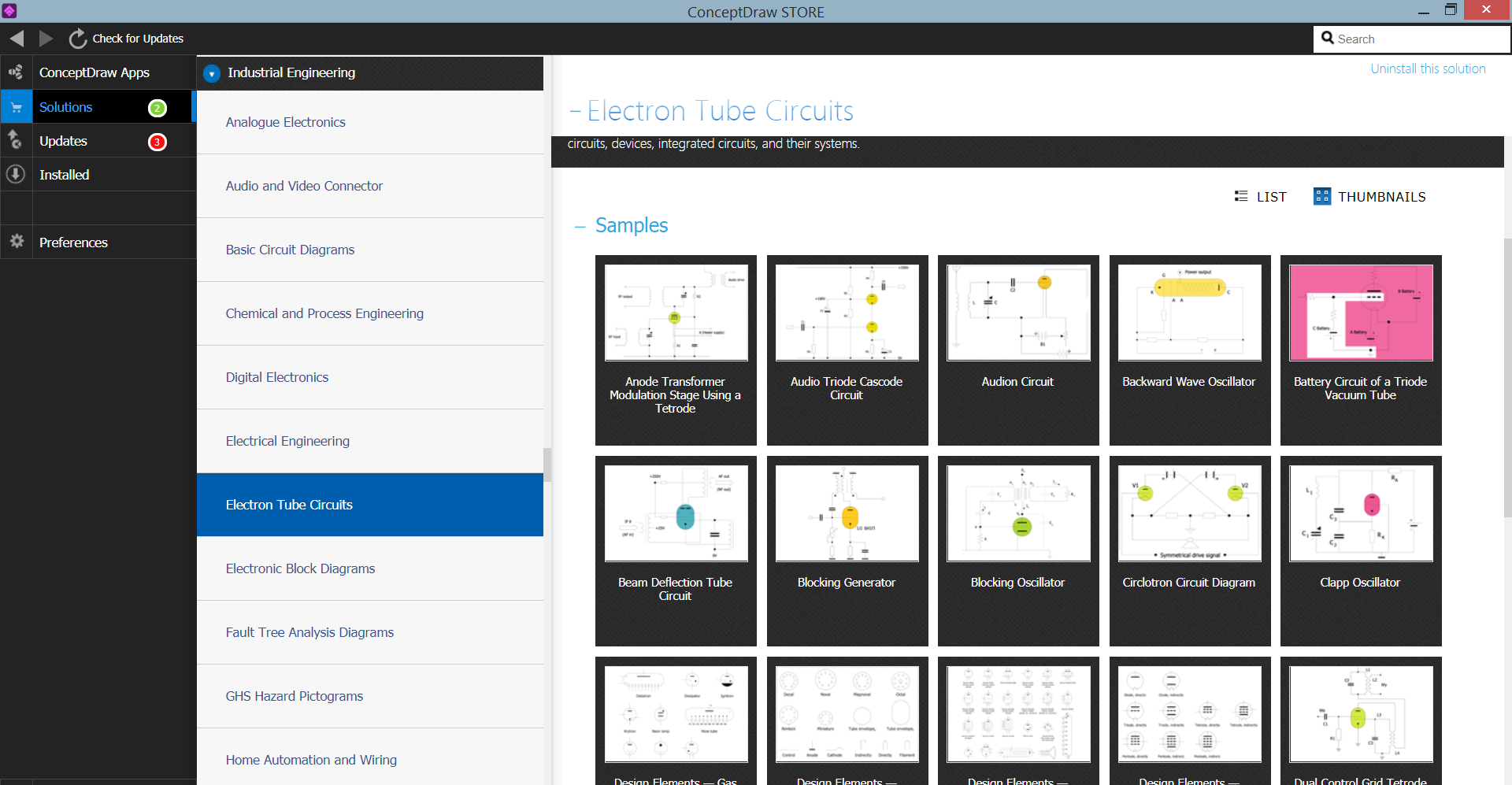Gas-filled Tube
A gas-filled tube also called a discharge tube or a Plücker tube is an insulating and temperature-resistant envelope filled with gas and including electrodes. As a rule, the envelope is made of glass, however, ceramic is also used. The operation of the gas-filled tubes is related to electric discharge in gases. It is based on ionizing the gas with an applied voltage and sustaining discharge. When there is enough charge on the electrodes, the electric discharge occurs and produces light. The required voltage depends on the tube's geometry, pressure, and composition of the gas in the tube. There are two types of devices - with hot cathode and cold cathode.
Gas-filled tubes are the component of gas-discharge lamps, fluorescent lamps, neon lights, sodium-vapor lamps, and metal-halide lamps. They are filled with various inert gases: hydrogen, deuterium, or noble gases. These gases cool the tungsten filament, suppress its evaporation and, as a result, increase the lifetime of the tube, its operation temperature, and light output. The use of gases with higher atomic weight increases the efficiency of suppressing the evaporation of the filament. At the same time, the use of rare gases like xenon increases the cost of tubes.
- Hydrogen is used in tubes applied for very fast switching like dekatrons, thyratrons, krytrons, etc.
- Deuterium is commonly used in tubes where high voltage operation is required like ultraviolet lamps, neutron generator tubes, etc.
- The noble gases used in gas-filled tubes include argon, krypton, xenon, helium, neon and provide various useful abilities including lighting and switching.
- Helium is used in helium-neon lasers and thyratrons rated for high currents and high voltages.
- Xenon is used in higher-voltage switching tubes. It helps to produce ultraviolet radiation when used as a component of gas mixtures.
- Neon is frequently used in low-voltage tubes, has low ignition voltage and shines red when the discharge in it emits. This feature is used for colorful illumination, in indicators and neon signages. The color of the emitted light depends on the type of gas filling the tube.
- Argon is a low-cost, high-efficiency, and low-striking voltage gas that is used in fluorescent tubes and rectifier tubes.
- Krypton is also used in fluorescent lamps and provides reducing the total energy losses on electrodes.
All three gases (neon, argon, and krypton) are often successfully used in combination with mercury due to its high vapor pressure and low ionization potential. It helps to increase the tube lifetime and reduce energy losses. Mercury is used in mercury-arc valves, ignitrons, and fluorescent tubes as a source of visible and ultraviolet light.

Example 1. Design Elements - Gas-filled Tube in ConceptDraw DIAGRAM
Clear, visual, and accurately created schematics are supreme need for electrical engineering. Therefore, currently, it is incredibly actual to have simple and convenient software to create them. ConceptDraw DIAGRAM software with the Electron Tube Circuits solution included is the ideal software to create schematics for a gas-filled tube or other types of electron tubes.
Example 2. Electron Tube Circuits Solution in ConceptDraw STORE
Electron Tube Circuits solution includes 4 vector stencils libraries:
- Design Elements — Gas Filled Tubes
- Design Elements — Vacuum Tubes
- Design Elements — Vacuum Tubes IEC
- Design Elements — Vacuum Tube Sockets and Elements
All vector elements and large collection of pre-made samples included to the Electron Tube Circuits solution are a good base to easier creating of Electron tube circuits, Vacuum tube circuits, and more Electrical circuits.
Example 3. Audio Triode Cascade Circuit
The Electron Tube Circuits samples you see on this page were created in ConceptDraw DIAGRAM software using the drawing tools of the Electron Tube Circuits Solution. These examples successfully demonstrate the solution's capabilities and professional results you can achieve using it. An experienced user spent 5-10 minutes creating each of these samples.
Use the drawing tools of the Electron Tube Circuits solution to design your own Electron Tube Circuits Infographics quick, easy, and effective.
All source documents are vector graphic documents. They are available for reviewing, modifying, or converting to a variety of formats (PDF file, MS PowerPoint, MS Visio, and many other graphic formats) from the ConceptDraw STORE. The Electron Tube Circuits Solution is available for ConceptDraw DIAGRAM users.

